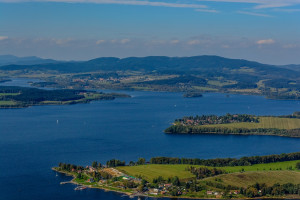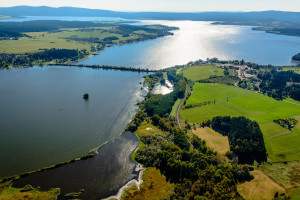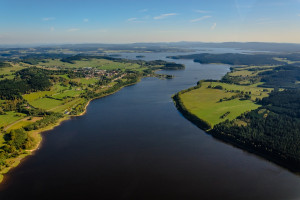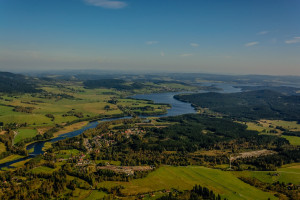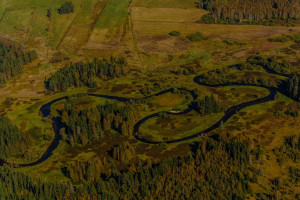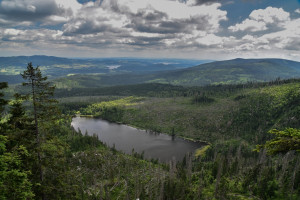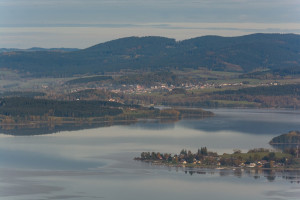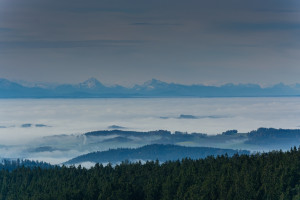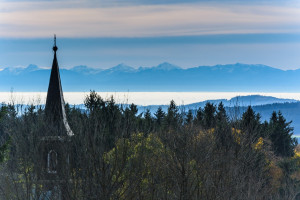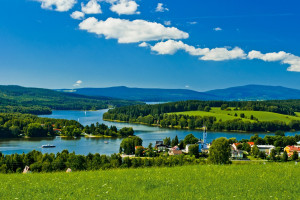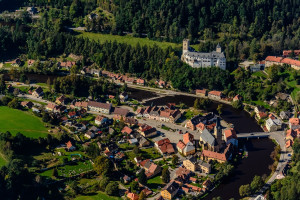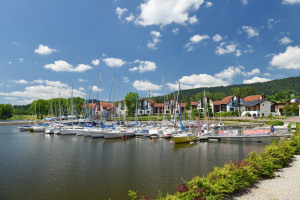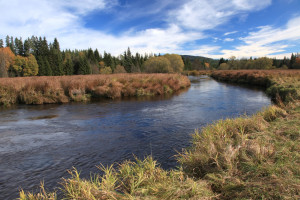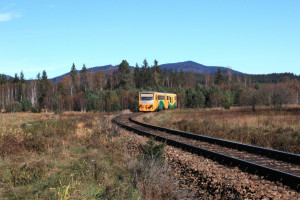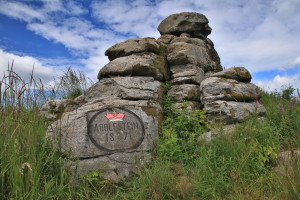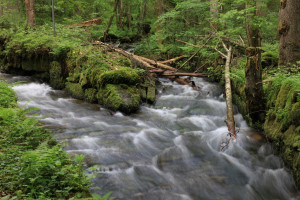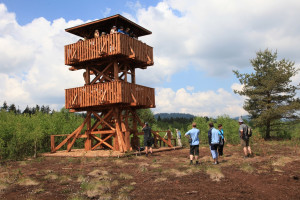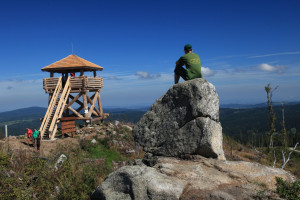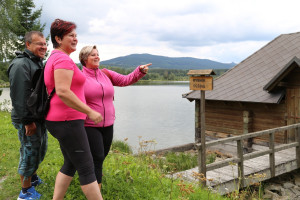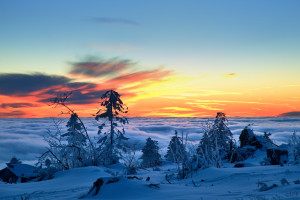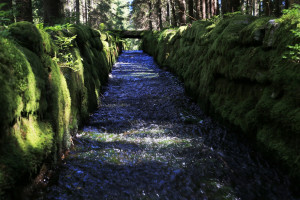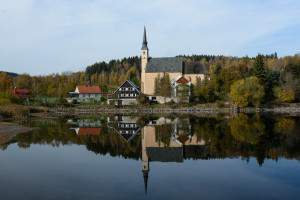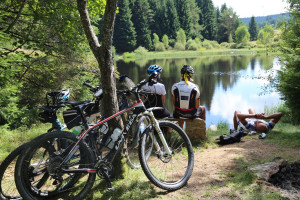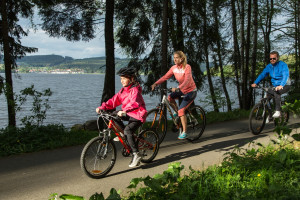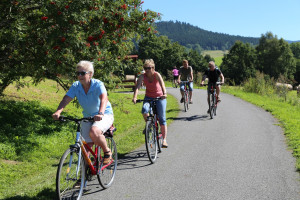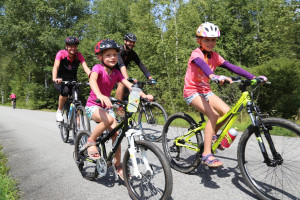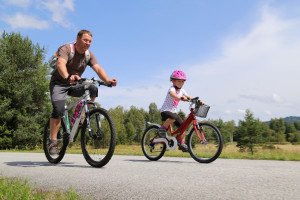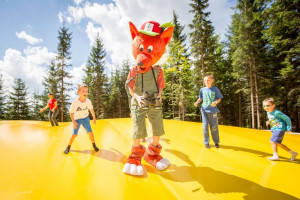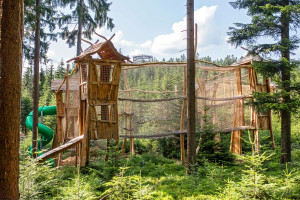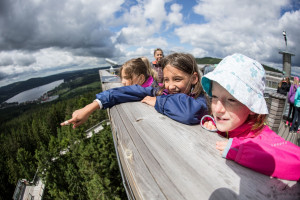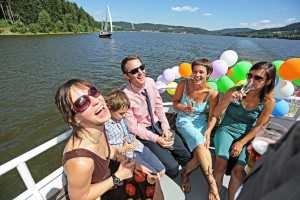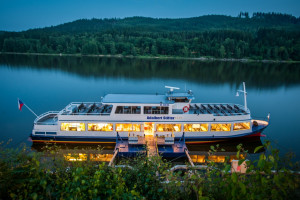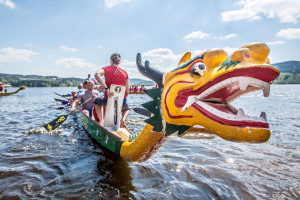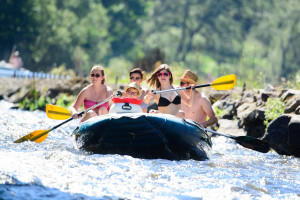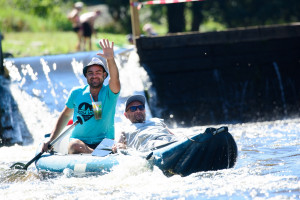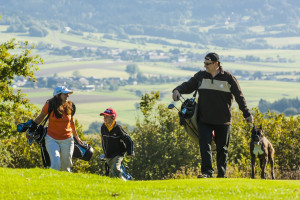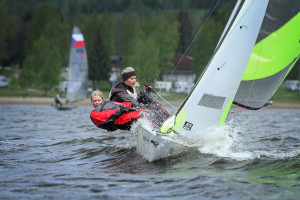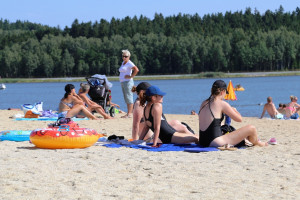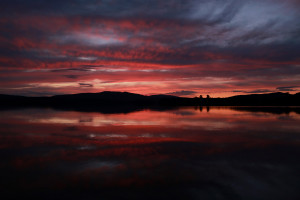Discover the
uniqueness of
Lipno Region
6 reasons
why you should visit Lipno Region
LIPNO AND THE RIVER VLTAVA
Sometimes called the Czech sea, Lake Lipno is set within the fascinating Šumava countryside below the ridges lining the boundary with Austria and Germany. With its length of 42 km and the maximum width of 10 km, Lipno and its surroundings offer an ideal potential for tourism. Year after year, the waters of the lake attract kayak and kite enthusiasts as well as boaters and surfers. The countless water sports and services to rent any equipment you wish to will help you enjoy a vacation of your dreams. Moments of relaxation and rest can be boosted by making use the dozens of beaches which are partly covered with sand and partly with grass. Steamboat trips are also something to enjoy. The River Vltava which feeds the lake can be navigated both upstream and downstream of the dam reservoir. While in its upper stretch it flows through the fascinating scenery of Šumava National Park, the rapids down the stream form the world-famous Čertovy proudy - a stretch that sees European world cups being held; a film entitled Raftsmen was also shot at the site. The section of the River Vltava from Vyšší Brod via Rožmberk and onwards is the most visited river stretch in the Czech Republic at all.
Natural World
Primarily, the Lipno region - a landscape of what was formerly a South Bohemian see - is a fascinating wild scenery. The upper portion of the territory is situated in Šumava National Park where you can walk on the ridges in the elevation of 1,300 metres. With its 1,378 metres, Plechý (Mt. Plöckenstein) is the highest mountain top; below the peak, there is the lake of Plešné jezero of glacial origin. On the other hand, the remnants of primary forest around the municipality of Stožec - boasting a rare wooden chapel - gives comfortable hugs to everyone who loves old mixed-species woods and historical heritage. The entire right bank of Lake Lipno is part of Šumava PLA and still remains almost untouched by civilisation. The same applies to the natural systems found on the left bank of the Lipno within the partially accessible Military Training Area of Boletice located north of Horní Planá. In the region’s forests, you can encounter wild-ranging animals such as the European lynx, the capercaillie, the black grouse or the Eurasian elk; wolves slowly return. In the waters of the upper stretch of the River Vltava, there live rare species such as freshwater pearl mussel and the European otter. Looking for natural habitats that are more beautiful and easy-to-access than these while refusing to leave the centre of the densely-populated Europe will be more than difficult.
Cycling a in-line skating
In the surroundings of Lipno you can find the longest routes for in-line skating and Sunday cycling in Bohemia. From Stožec all the way to Lipno nad Vltavou, there are dozens of kilometres of bitumen-paved trails which are exclusively intended for skaters and cyclists. For cyclists, the region is literally a paradise. You can comfortably go throughout the territory from the hills of Jelení vrchy up to Rožmberk, which makes a total of 70 km down the hill! Just let your equipment ride along the Schwarzenberg Navigation Channel, along Lake Lipno, and down the River Vltava. More demanding sportspeople are free to make use of hundreds of kilometres of routes along forest roads in forests with the most challenging profiles - something designed not only for a Sunday cyclist, but also for a top professional.
Fund and entertainment for everyone - no matter how large or old
If you are looking for a place where you can not only have a rest staying in beautiful countryside, but also enjoy great fun or go completely wild with the cutting-edge tourist attractions, then Lipno Region is the right place for you. The far-famed Treetop Walkway and, very recently, the Forest Kingdom have already allured two million visitors from all over Europe. Two bobsleighs operated all the year round, rope trails, observation towers with views of Lipno or even the Alps, a steamboat ride with Lipno Line, fascinating aquaria with underwater life offered at the Hotel Frymburk, Kubík the Bear’s Activity Park in Frymburk and even the Adventure miniature golf course found in Lipno nad Vltavou, with 18 wells and a holography projection, illuminated at night and equipped with a sound system, all this belongs among the attractions that simply cannot be missed.
Cultural and historical heritage
In Lipno Region, history can be found breathing every step of the way. The Rožmberk Castle as a gem in the crown of the River Vltava, the Cistercian Monastery in Vyšší Brod with its unique library, and Záviš’s cross with its value reaching that of the coronation jewels, all this impresses visitors from all over the world. On the top of it, there is the castle of Vítkův hrádek - a structure of its kind situated at the highest elevation in the Czech Republic; there they once jailed Czech King Wenceslas IV. This castle also offers the best views of Lake Lipno and the Alps. Unique to Europe is the Passion Play Theatre in Hořice na Šumavě which was visited by dozens of thousands of people from across Europe at the time of its greatest glory. Europe also honours famous poet, novelist and painter Adalbert Stifter, a native of Horní Planá, whose work you can recall in many places in the region, particularly at the Museum of Adalbert Stifter in his home town. National heritage sites include the water work called Schwarzenberg Navigation Channel; without any modern surveying technology and equipment, the structure measuring 44 km in length was built amidst the Šumava Mountains in 1789-1822; today, tourists can admire it both on the Czech and Austrian side of the Lipno region. Cultural and historical heritage of the region is complete with dozens of old, often restored churches and stations of the cross.
Sports, training, races
Natural sites, forests, peat bogs, running and stagnant water and hills in elevations over 1,000 metres - all this forms the best conditions for active, elite and professional sportspeople. The territory of Lake Lipno offers numerous possibilities to hold major public races in many disciplines; this is included in the reasons why semi-professional and professional teams of all sectors of sports make use of the region for their preparation training. The River Vltava downstream of the dam near Loučovice is amongst the most difficult river stretches for raftsmen and canoeists. This boater route is among the most challenging natural slalom and raft tracks in the world. In the open water of Lake Lipno, there are various yachting, swimming, and even triathlon races held on a regular basis. Community races enjoy the popularity of the general sporting public such as the extreme Gigathlon, MTB Nova Cup, Czech-Bavarian series of MTB races, the scooter races in Rožmberk, Lipno Sport Fest, Lipno Ice Marathon on the frozen lake in winter, the cross-country skiing race in Nová Pec entitled Šumavská 30, Stožecká brusle (Stožec Skate) - an in-line skating race. And many more…
The beauties of our region
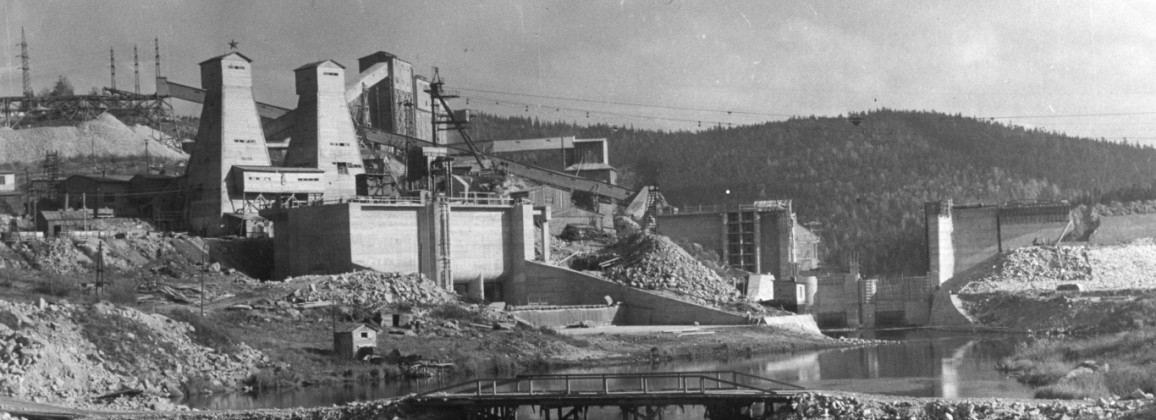
Lipno Reservoir - the story behind
About the construction of the Lipno Dam Reservoir and the story behind the hydroelectric power plant
Long time ago, the area of the upper stretch of the River Vltava was a Tertiary lake. The chronicles of municipalities situated between Frymburk and Vyšší Brod contain a whole series of reports on floods and cases of high-water from the 17th century to the 19th century. Perhaps the largest events of this kind occurred in 1740 and 1890. The history of the Lipno Dam Reservoir begins after the great flood of 1890. In 1892, Ing. Daniel published a brochure in which he proposed a minor dam reservoirs to be set up within the upper stretch of the river and its feeder streams to prevent floods. Farmers, however, were not happy to sell their land. With another major flood of 1920, the idea was reborn of building dams or a single dam that would have the capacity to hold water from spring thawing in the Šumava Mountains. In 1930, engineers of the Land Office placed Lipno as the construction site of the dam for the first time in their plans. But even this time, attempts to acquire the planned flooded area failed. It was not before World War II when the plan was born to build a dam reservoir at Lake Lipno along with a power plant turbine.
The planned flooded zone of the reservoir needed 550 hectares of forest to be cut down and deforested; this equals to as many as 550 squares sized as the one found in České Budějovice. Only in 1956, 25 thousand solid cubic metres of timber were brought out from swamps.
- In mid-January 1957, an operation was launched involving the breaking of the rock in the underground of the power plant.
- On the 26th day of June, 1958, the last-remaining block of the dam was concreted up to the level of the carriage way.
- A total of 70 thousand cubic metres of concrete, 600 tonnes of steel, and 300 tonnes of machinery were placed locally.
- On the first day of September, 1958, the construction site was taken over for building the first of turbines.
- On Monday of 15 June 1959, at 5.55 p.m., the first cubic metres of water started to rotate the turbine blades and the stately, 350-tonne rotor was set in motion. After delivery testing, the grid received the first-ever megawatts of electricity.
